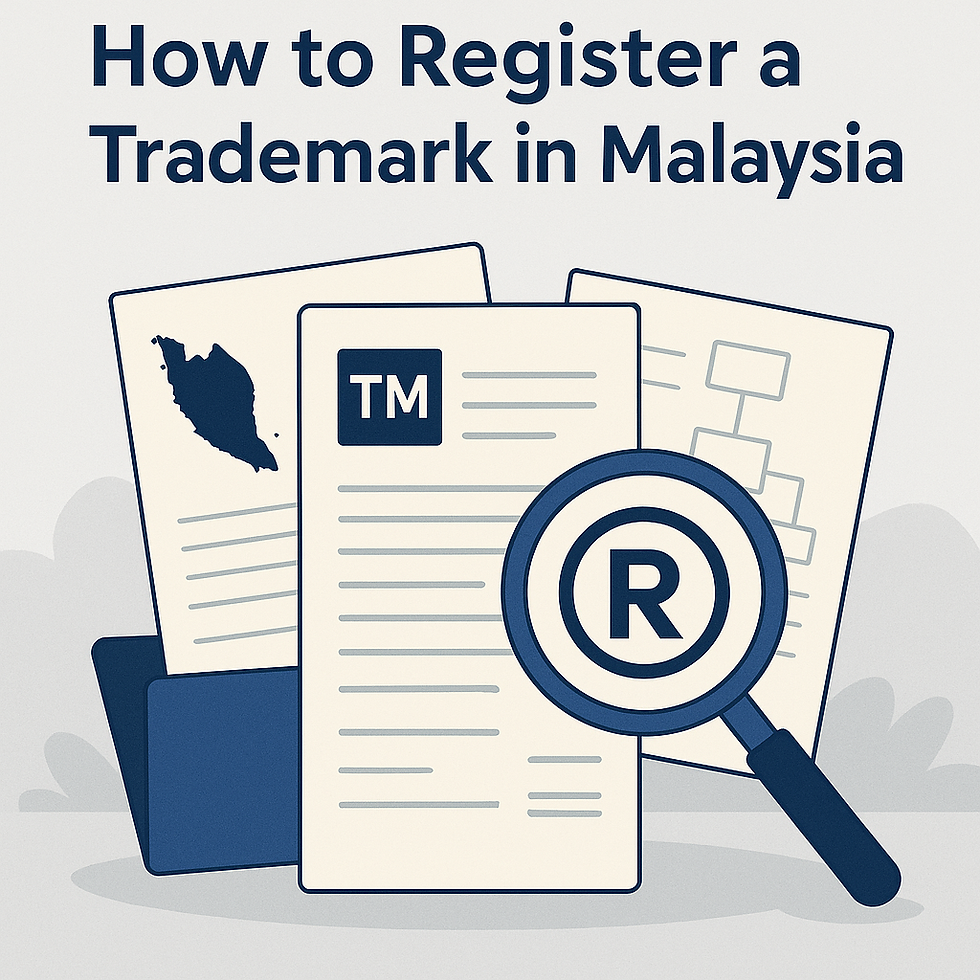Trademark 101
- The Gordian Team

- Sep 1, 2020
- 4 min read
Updated: Nov 10, 2022

1. What is Trademark?
Commonly known as a brand (yes and no, we’ll get into that later). A trademark is an indication of origin - a sign that points you to the maker of a product or the provider of a service. The sign can be lots of things (e.g. words, logos, shapes, sounds, scents, etc.), as long as the consumers can tell who is responsible for the products or services, it can be a trademark. Common examples includes :-

2. Is a Trademark a Brand?
Trademarks are brands, but not all brands are trademarks. A brand is anything that a consumer recognises as being part of the identity of a business, e.g. - interior design (the interior design of McDonald’s is virtually the same everywhere in the world), the way things are done (the phrase “Welcome to Uniqlo” chanted and echoed by the shop assistants as you enter), or colours/styles of products (e.g. Muji Style). Trademark (at least in the legal sense) is a narrower concept. Only brands that are capable of being represented on paper can be considered as trademarks. Therefore, if a brand can be written or printed on a piece of paper, chances are it is also a trademark.
Still confused? See if this venn-diagram helps:-

3. How can I protect my Trademark?
The most common (usually also the most effective) way of protecting a trademark is through registration. Registration is an official recognition of your ownership of your trademark (much like a business registration certificate, title deed, etc.). With this official recognition, you can enforce your exclusive rights to use the trademark either in court or with the help of other official bodies (e.g. customs, police etc.).
Aside from registration, there are other ways of protecting your trademark by relying on other areas of the law e.g. contract law, the tort of passing-off, copyright, anti-trust, anti-competition, etc.
4. If I register my Trademark locally will I get protection internationally?
Usually no. Trademark Rights are territorial. If you register in country A, you get trademark protection only in country A and nowhere else. There are a few regional registrations available e.g. an EUTM registration which covers the whole of the EU, ARIPO registration in the mostly English-speaking countries of Africa, OAPI registration in the mostly French-speaking countries of Africa.
5. What about the International Registration or the Madrid System?
The International Registration or Madrid System makes it easier for you to register your trademark in over 120 countries. For example, you have applied to register your trademark in Malaysia, and you now would like to do the same in the US, EU, China, Australia, and Japan. Via the Madrid system, all you need is to make one application designating the aforesaid countries, wait for the individual trademark bodies there to give you the greenlight, and after which, you’ll have your International Registration. This can be a simpler and cost-effective way to extend your trademark registration worldwide. And what’s more, you can transfer or renew your International Registration by submitting just one application, instead of having to repeat the same process in all 5 countries.
6. Can I register just about anything as a Trademark?
As we’ve mentioned above, if your brand is capable of being represented on a piece of paper, chances are they can be a trademark. However, whether you can register that trademark is another matter. A trademark may not be registered if:-
(i) it is generic;
(ii) it is offensive/illegal/obscene; and
(iii) someone else has already used/filed/registered it.
7. Why can’t I register a generic/descriptive sign?
Generally, you can’t register a generic/descriptive word, logo, symbol, or design as a trademark. The reason is simple. Registration gives you exclusive right (monopoly) to use the trademark, and if you are allowed to register a generic/descriptive sign, no one else can use it! Imagine if I register the word “restaurant” as a trademark for restaurant services, no one can use that word to describe their f&b outlet without infringing my trademark rights. Accordingly, the more generic/descriptive a trademark, the harder it is to register.
Useful tip: In general, if a sign is needed by your competitors to describe or represent their products/services, it is probably generic/descriptive, and you can’t have it registered as a trademark.
8. How long does my registration last?
Usually 10 years, but you can renew the registration for as long as you are still using the trademark. One of the oldest registered trademark is 144 years old and it’s still going strong. See below:-

Trademark No. 1 in the UK’s Trademark Register (filed on 1 January 1876)
9. TM or R ?
You can’t use the R symbol unless your trademark is registered. The TM symbol stands for “Trademark” and is used to notify the public that a sign is used as such. Sometimes, you’ll see the SM symbol, which stands for “Service Mark”, and it means a trademark is used in relation to a service instead of a product. The use of either of these three symbols is not legally required and serves no purpose other than as a notice/reminder.
Got a question about your brand or trademark? Why not give us a holler?





Comments